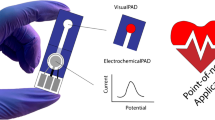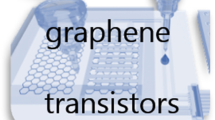Abstract
To enable enhanced paper-based diagnostics with improved detection capabilities, new methods are needed to immobilize affinity reagents to porous substrates, especially for capture molecules other than IgG. To this end, we have developed and characterized three novel methods for immobilizing protein-based affinity reagents to nitrocellulose membranes. We have demonstrated these methods using recombinant affinity proteins for the influenza surface protein hemagglutinin, leveraging the customizability of these recombinant “flu binders” for the design of features for immobilization. The three approaches shown are: (1) covalent attachment of thiolated affinity protein to an epoxide-functionalized nitrocellulose membrane, (2) attachment of biotinylated affinity protein through a nitrocellulose-binding streptavidin anchor protein, and (3) fusion of affinity protein to a novel nitrocellulose-binding anchor protein for direct coupling and immobilization. We also characterized the use of direct adsorption for the flu binders, as a point of comparison and motivation for these novel methods. Finally, we demonstrated that these novel methods can provide improved performance to an influenza hemagglutinin assay, compared to a traditional antibody-based capture system. Taken together, this work advances the toolkit available for the development of next-generation paper-based diagnostics.







Similar content being viewed by others
Notes
GE FF60 has been replaced in the product line with updated FF80HP from GE Healthcare.
References
Tonkinson JL, Stillman BA (2002) Nitrocellulose: a tried and true polymer finds utility as a post-genomic substrate. Front Biosci 7:c1–c12
Fridley GE, Holstein CA, Oza SB, Yager P (2013) The evolution of nitrocellulose as a material for bioassays. MRS Bull 38:326–330. doi:10.1557/mrs.2013.60
Gubala V, Harris LF, Ricco AJ, Tan MX, Williams DE (2012) Point of care diagnostics: status and future. Anal Chem 84:487–515. doi:10.1021/ac2030199
Mansfield M (2009) Nitrocellulose membranes for lateral flow immunoassays: a technical treatise. In: Wong RC, Tse HY (eds) Lateral flow immunoass. Humana Press, New York, pp 95–113
O’Farrell B (2009) Evolution of lateral flow-based immunoassay systems. In: Wong RC, Tse HY (eds) Lateral flow immunoass. Humana Press, New York, pp 1–33
Vermasvuori R (2009) Production of recombinant proteins and monoclonal antibodies—techno-economical evaluation of the production methods. Helsinki University of Technology. http://lib.tkk.fi/Lic/2009/urn100121.pdf
Fleishman SJ, Whitehead TA, Ekiert DC, Dreyfus C, Corn JE, Strauch E-M, Wilson IA, Baker D (2011) Computational design of proteins targeting the conserved stem region of influenza hemagglutinin. Science 332:816–821. doi:10.1126/science.1202617
Whitehead TA, Chevalier A, Song Y, Dreyfus C, Fleishman SJ, De Mattos C, Myers CA, Kamisetty H, Blair P, Wilson IA, Baker D (2012) Optimization of affinity, specificity and function of designed influenza inhibitors using deep sequencing. Nat Biotechnol 30:543–548. doi:10.1038/nbt.2214
Wu P, Castner DG, Grainger DW (2008) Diagnostic devices as biomaterials: a review of nucleic acid and protein microarray surface performance issues. J Biomater Sci Polym Ed 19:725–753. doi:10.1163/156856208784522092
Rusmini F, Zhong Z, Feijen J (2007) Protein immobilization strategies for protein biochips. Biomacromolecules 8:1775–1789. doi:10.1021/bm061197b
Jonkheijm P, Weinrich D, Schröder H, Niemeyer CM, Waldmann H (2008) Chemical strategies for generating protein biochips. Angew Chem Int Ed 47:9618–9647. doi:10.1002/anie.200801711
Pelton R (2009) Bioactive paper provides a low-cost platform for diagnostics. TrAC Trends Anal Chem 28:925–942. doi:10.1016/j.trac.2009.05.005
Sicard C, Brennan JD (2013) Bioactive paper: biomolecule immobilization methods and applications in environmental monitoring. MRS Bull 38:331–334. doi:10.1557/mrs.2013.61
Yu A, Shang J, Cheng F, Paik BA, Kaplan JM, Andrade RB, Ratner DM (2012) Biofunctional Paper via the Covalent Modification of Cellulose. Langmuir 28:11265–11273. doi:10.1021/la301661x
Yetisen AK, Akram MS, Lowe CR (2013) Paper-based microfluidic point-of-care diagnostic devices. Lab Chip 13:2210. doi:10.1039/c3lc50169h
Holstein CA, Fridley GE, Adcock CA, Yager P (2015) Methods and Models to Examine Protein Adsorption to Nitrocellulose. Anal Chem (in review)
Metkar SS, Mahajan SK, Sainis JK (1995) Modified procedure for nonspecific protein staining on nitrocellulose paper using Coomassie brilliant blue R-250. Anal Biochem 227:389–391. doi:10.1006/abio.1995.1297
Li B, Olsen CE, Moore DR (2011) Porous membranes having a polymeric coating and methods for their preparation and use. US patent application, US20130171618 A1
Li B, Olsen CE, Moore DR (2011) Porous membranes having a polymeric coating and methods for their preparation and use. US patent application, US20130171368 A1
Li B, Olsen CE, Moore DR (2011) Porous membranes having a polymeric coating and methods for their preparation and use. US patent application, US20130171026 A1
Koga N, Tatsumi-Koga R, Liu G, Xiao R, Acton TB, Montelione GT, Baker D (2012) Principles for designing ideal protein structures. Nature 491:222–227. doi:10.1038/nature11600
Huang P-S, Oberdorfer G, Xu C, Pei XY, Nannenga BL, Rogers JM, DiMaio F, Gonen T, Luisi B, Baker D (2014) High thermodynamic stability of parametrically designed helical bundles. Science 346:481–485. doi:10.1126/science.1257481
Currie LA (1995) Nomenclature in evaluation of analytical methods including detection and quantification capabilities (IUPAC Recommendations 1995). Pure Appl Chem 67:1699–1723. doi:10.1351/pac199567101699
Holstein CA, Griffin M, Hong J, Sampson PD (2015) A statistical method for determining and comparing limits of detection of bioassays. Anal Chem. doi:10.1021/acs.analchem.5b02082
Van Oss CJ, Good RJ, Chaudhury MK (1987) Mechanism of DNA (Southern) and protein (Western) blotting on cellulose nitrate and other membranes. J Chromatogr 391:53–65
American Chemical Society, American Chemical Society (1995) Proteins at interfaces II: fundamentals and applications. American Chemical Society, Washington, DC
EMD Millipore Corporation (2008) Rapid lateral flow test strips: consideration for product development. EMD Millipore Corporation, Billerica, MA
Přistoupil TI, Kramlová M, Štěrbíková J (1969) On the mechanism of adsorption of proteins to nitrocellulose in membrane chromatography. J Chromatogr A 42:367–375. doi:10.1016/S0021-9673(01)80636-1
Acknowledgments
The authors thank colleagues in the Yager, Baker, and GE Global Research groups for helpful discussions regarding this work. The authors particularly acknowledge Rashmi Ravichandran for her help in producing many of the recombinant flu binder proteins. This material is based upon work supported by the National Science Foundation Graduate Research Fellowship Program under Grant No. DGE – 0718124, by the National Institute of Allergy and Infectious Diseases of the National Institutes of Health under award number R01AI096184, and by the University of Washington Department of Bioengineering. The content is solely the responsibility of the authors and does not necessarily represent the official views of the National Institutes of Health.
Conflict of interest
The authors declare that they have no conflict of interest.
Author information
Authors and Affiliations
Corresponding author
Additional information
Published in the topical collection Fiber-based Platforms for Bioanalytics with guest editors Antje J. Baeumner and R. Kenneth Marcus.
Electronic supplementary material
Below is the link to the electronic supplementary material.
ESM 1
(PDF 573 kb)
Rights and permissions
About this article
Cite this article
Holstein, C.A., Chevalier, A., Bennett, S. et al. Immobilizing affinity proteins to nitrocellulose: a toolbox for paper-based assay developers. Anal Bioanal Chem 408, 1335–1346 (2016). https://doi.org/10.1007/s00216-015-9052-0
Received:
Revised:
Accepted:
Published:
Issue Date:
DOI: https://doi.org/10.1007/s00216-015-9052-0




